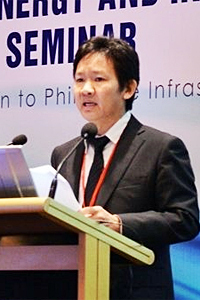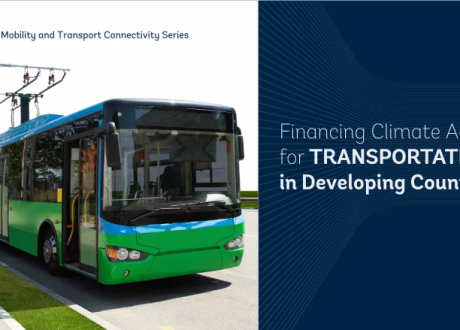
Egypt’s Abouleish among 100 Most Influential Africans 2024 in civil society
Egypt’s Helmy Abouleish, a prominent figure in the field of sustainable agriculture, particularly known for ...

Residents in many of Asean’s most polluted cities have been delighted to observe significant decreases in pollution levels as a result of Covid-19 lockdown measures that have disrupted the economy, and thus many pollution-causing activities.
However, as governments begin lifting restrictions and business activities return, so too will the demand for energy. Economic recovery could see the levels of CO2 emissions bouncing back very quickly.
Indeed, global data from late last month shows an all-time high for levels of CO2 as countries start to reopen the economies. However, with all the tragedy caused by the coronavirus pandemic, perhaps there can be a silver lining in terms of how we navigate Asean’s energy transition if we can embrace renewable energy (RE) and clean technologies.
The post-Covid-19 economic recovery will drive increased energy demand. Asean’s energy mix greatly relies on fossil fuels which are a significant source of emissions. To ensure the region’s energy sustainability, development and healthy environment, this rapid increase in demand will need coordinated management and appropriate energy supply infrastructure and investment.
Investment in renewable energy and clean technologies still faces instability and high costs. Thus, energy policy targets and clean technologies penetration into energy systems will need to be promoted by Asean leaders. Investments into low-carbon technologies and renewables are key to managing the energy transition towards cleaner use of energy and addressing emissions.
The Asean Plan of Action for Energy Cooperation (Apaec) Phase 2, which is under preparation for endorsement at the Asean Ministers on Energy Meeting later this year, will set key energy policy targets and have significant policy implications for energy infrastructure-related investment in the region.
Key targets include the revision of the new Energy Efficiency and Conservation target from 30% energy intensity reduction by 2025 (based on 2005 levels) to more ambitious levels — with a likely new target of 35-40% reductions — and will involve expansion of energy efficiency measures for transport and industries.
Apaec Phase 2 will also establish a new sub-target for the share of renewables in installed power capacity which will complement the existing target of 23% share of renewables in the Total Primary Energy Supply by 2025. In addition, Apaec Phase 2 will include policy measures to pursue smart grids and RE grid integration, and measures to address emerging and alternative technologies such as hydrogen, energy storage, bioenergy, nuclear energy, decarbonisation, energy investment and financing and private sector participation.
However, Asean will need to lay out a clear energy transition strategy to deal with the mix of fossil fuels and new and clean technologies.
While economic growth has made REs around the world more affordable, many emerging economies are still in the early stages of development and may not have sufficient funds. For Asean members who can afford more investment in REs, an important concern is a need for electricity storage and smart grids to support higher RE penetration levels into the electricity sector.
Smart grid technologies are already making significant contributions in some developed Organisation for Economic Co-operation and Development (OECD) countries. However, these technologies are undergoing continual refinement, and hence, are vulnerable to potential technical and non-technical risks.
RE growth will thus be constrained by infrastructure development and the evolution of technology, including the capacity to assess and predict the availability of RE sources. These capacities offer additional benefits, notably the promise of higher reliability and overall electricity system efficiency. In terms of global climate, RE provides a promising prospect for the world’s energy sector.
Asean countries would be smart to follow the same trend as the rest of the world and expand their RE industries. Due to technological advancements, the great growth potential of RE in the future will come from wind, solar and biofuel power which will compete with traditional fossil fuels.
In Asean, there is also ample scope for growth in hydroelectricity, particularly in relatively less developed economies like Cambodia, Myanmar and Laos. In some Asean countries, there is also a potential for growth in geothermal energy.
The largest reduction of CO2 emissions is expected in the power sector, as a result of introducing renewable energy as much as possible. Realising high penetration of renewables in the power sector requires a huge investment in power system integration through the Internet of Things (IoT). Doing so enables a balance between distributed power generation, market systems, demand response technologies and information technology.
Coordinated power system integration through IoT is known as a “smart grid system”. The systems consist of complex arrangements of infrastructure and digital technologies that depend on connectivity to function. As the European Union has achieved a high penetration of renewables using the smart grid system, Asean may have much to learn from Europe.
To bridge the current energy system with a cleaner energy system in the system, Asean will need to consider the use of fossil fuel without severely damaging the environment and the innovative technologies that can reduce CO2 and Green House Gas (GHG) emissions.
Given that the energy sector accounts for two-thirds of global GHG emissions, urgent steps are needed to decarbonise the energy sector through the development of a low-carbon economy, which requires the rapid deployment of clean fossil fuel technologies, renewable energy development and increased energy efficiency.
Covid-19 presents an opportunity, and Asean’s leaders must act boldly to increase RE investment and the use of clean technologies to formulate energy policies, which could include the removal of fossil fuel subsidies that discourage RE investment.
If Asean leaders are complacent or lack tenacity, energy consumption and the resultant emissions are likely to surpass pre-pandemic levels. It is crucial for the leaders to act now to make energy policy changes for clean technology investment and decarbonising emissions.
Egypt’s Helmy Abouleish, a prominent figure in the field of sustainable agriculture, particularly known for ...
A study – by the Potsdam Institute for Climate Impact Research (PIK) – suggests that ...
Investing in resilient transport in low- and middle-income countries (LMICs) requires $417 billion annually between ...


اترك تعليقا